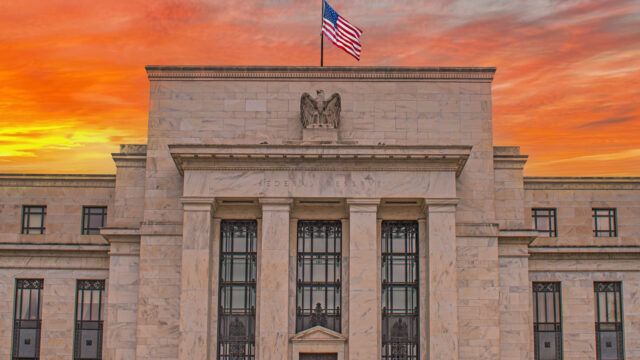Investors should come to terms with the likelihood of interest rates staying high until mid-2024, requiring a focus on income and diversification to drive returns.
This outlook is based on the convergent narratives among some of the world’s major central banks. In the US, Europe and UK, for example, they say they are at or close to policy rate peaks, but with a hiking bias, plus conviction that the cumulative tightening and restrictive monetary conditions will eventually tame inflation.
“In a nutshell, central banks may be “done”, but we would not count on a swift reversal of their stance before the middle of next year,” said Gilles Moec, AXA Group chief economist and head of AXA IM research.
As a result, without imminent rate cuts, investors face the hurdle of beating high cash rates, making it hard for riskier assets to outperform, he explained.
At the same time, volatility is cheap, bond yields are the most attractive they have been for 15 years and the global economy is not in recession.
“Things could be worse,” added Moec, “and although total returns are not likely to benefit from the direct effects of lower interest rates anytime soon, it seems that the current set-up of markets cries out for focus on income and diversification.”
Counting on catalysts
While the rationale of a higher-for-longer approach is to minimise macro volatility relative to an “ever higher” trajectory, this is not a risk-free strategy.
Notably, said Moec, the current policy stance in developed economies has resulted in market pricing being consistent with the message from policymakers.
It may also mean that fundamentals for equities and credit steadily deteriorate, he added. “The longer policy and market rates remain high, the greater the impact on corporate borrowing costs will be as more and more refinancing of debt is undertaken at higher costs.”
The shape of yield curves also likely makes it difficult for government bonds to outperform cash in the near term – unless markets reverse the recent re-pricing of the monetary policy outlook. Investors who have entered long duration bond strategies this year have mostly failed to enjoy positive returns.
However, added Chris Iggo, chair of the AXA IM Investment Institute and chief investment officer of AXA IM Core, bond yields at multi-year highs should help fixed income markets to deliver positive real returns on a multi-year horizon.
Higher yields have improved the risk-return trade-off for bonds, he noted. “For core benchmark yields, a 100bp decline would generate a total return (yield plus capital gain) well in excess of the total return loss that would be incurred as the result of a 100bp increase in yields (assuming a one-year holding period).”
This is positive for those investors that are less sensitive to marked-to-market gains and losses. “The long duration trade in government bonds looks attractive based on the view that cash rates will have started to come down in a year’s time,” Iggo added.
He believes the additional return from good quality investment grade (IG) corporate bonds makes the argument even stronger.
For example, single A-rated IG bonds in the US and Europe offer a spread above the rates curve of 120bps to 150bps.
For more performance-sensitive investors, Iggo points to short duration strategies with some spread as a potential way to compete with cash returns. “This has been the case over the [Northern hemisphere] summer with short duration credit, high yield and assets like leveraged loans delivering marginally better returns than cash. A soft landing with limited credit deterioration would support such an expectation.”
A diverse equities story
In equities, the same optimism cannot be applied to US and European markets, but elsewhere, investors can find attractive valuations in the UK, Eurozone and Asia.
“[These markets] are more attractively valued in terms of earnings multiples and with higher dividend yields compared to the major US stock market indices,” said Iggo.
Japan has rewarded stock buyers so far this year, with the Nikkei 225 stock average returning more than 25%.
In China, meanwhile, although investors are awaiting better news, the possibility of a substantial bounce seems strong once the macro outlook improves.

















